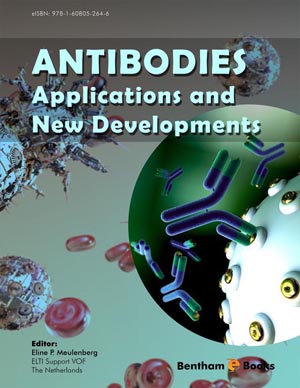Abstract
Immunosensors are devices that comprise both a biomolecular recognition system, such as an antibody and its corresponding antigen, and a transducer to translate the high affinity and specific binding event into a physical signal.
Antibodies are produced by an immunological response to the presence of a foreign substance called an antigen. Antibodies may be immobilised onto a variety of platforms including bulk planar surfaces and nanoparticles by either covalent or adsorption strategies. Different interfaces between the biocomponents and the detector are available to monitor in ‘real-time’ the signal generated by biological interactions. The transducers detect, for example, the change in electron transfer, absorbance, fluorescence, refractive index, mass change or heat transfer as the antibody binds to the antigen of interest. Such analytical devices have allowed a wide range of analytes to be identified and quantified such as pathogens, toxins, environmental food contaminants and disease biomarkers.
The demand for sensitive, rapid, and ‘on-site’ techniques has taken advantage of the latest advances in microfluidics and nanotechnology. This chapter will highlight current trends in immobilisation, micro/nano-fluidics/and transducers utilised. A number of examples outlining the exploitation of these elements in immunosensors and their successful applications will be described.
Keywords: Antibodies, Immunosensors.






















